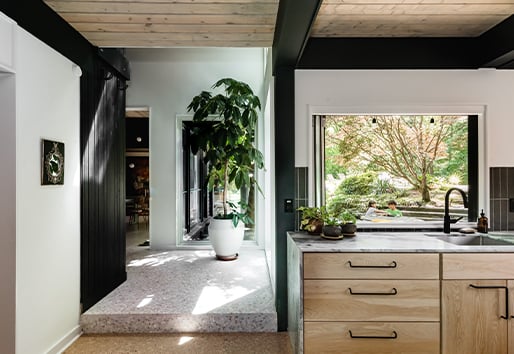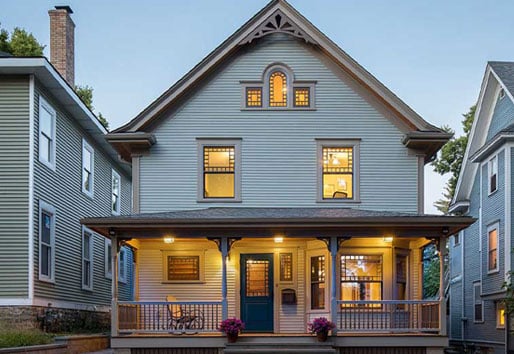Home styles
How to pick out windows for a Victorian home

What is a Victorian house?
Victorian style is generally synonymous with Queen Anne style. In the Victorian era, the Queen Anne was the most popular style of home, so, over time, that style simply became known as Victorian. These homes showcased intricate details that were the fashion of the era and also utilized mass production capabilities to make design elements more obtainable. Wall surfaces became primary decorative elements by incorporating gables, bay windows, towers, overhangs, wall projections, trim, and multiple cladding materials. And a rainbow of earthy colors was chosen.
Today, this style has become a distinctive and popular look. Ornate details combine in delightful and unexpected ways with elements like elaborately decorated trim, stained glass, and multiple colors. There are textured surfaces, patterns of wood or stone, and various tones of shingles or slate. And multiple levels are common with cantilevered upper stories. There is one notable style difference, however. While historic Victorian homes opted for earthy colors, today’s palette is brighter.

What type of windows match a Victorian?
Victorian homes are known for their grand and imposing vertically shaped windows. Tall, narrow, double-hung windows, often paired or tripled, are the most common, and should be at least 2 ½ times taller than they are wide. Large, cottage-style windows in the front of the house will often have the upper sash decorated with art glass or a decorative grille pattern combined with colored glass, both adding greatly to the home’s ornate style. Our A-Series windows are particularly well-suited for this style because they have architecturally authentic sash and grille details with an option for custom grille patterns. This makes them a perfect match for historical homes like Victorians.
- Grille patterns: The typical grille pattern for a Victorian-style window has small sections of clear or colored glass that form a pattern around the sash. In double-hung windows, the grilles are used only in the top sash. The grille placement should produce glass sections that are as close to square as possible — sections measuring 4’’ wide by 4’’ high are ideal. A number of other glass sections may be used around the perimeter of the window.
- Colors and finishes: For window exteriors and trim, white, cream, dove gray, forest green, and dark brown are recommended if an earthen palette is desired. Dark red, black, and tan can also be used for trim. However, feel free to let your imagination flow — an array of bright hues and color combinations work for today’s modern Victorian aesthetic. Window interiors can be a wood species like maple or oak, stained (russet or cinnamon are recommended), or painted (white, traditionally).
- Art glass: The most popular locations for art glass in Victorian homes are front cottage windows, accent windows, and bay windows. Patterns range from classical Renaissance designs to nature-inspired Art Nouveau motifs. Some of the art glass designs that complement Victorian architecture include Queen Anne, regency, victoria, and diamond lights.
- Accent windows: Accent windows in Victorian homes are commonly found in the towers and gable ends. Recommended shapes include circles, diamonds, and gothic arches. Casement windows are not historically accurate, but they’re acceptable in today’s Victorian homes as accent windows, especially where fresh air is desired.
Why do Victorian homes have bay windows?

What type of doors match a Victorian home?
The most common Victorian-style entry doors are simple, rectangular, raised-panel doors that often have mail slots. Art glass, whether in transom windows above the doors or in the upper half of the doors, is historically accurate. Double-entry doors may also be used for main entry. Side doors, back doors, and other auxiliary doors are less elaborate than main doors but often have art glass and transom windows.
How to pick out a front door for a Victorian home
Main entry doors should be taller than they are wide. They may be a single door or a pair of narrow double doors (to maintain a tall proportion). A Victorian-style front door should have a paneled appearance and may incorporate art glass. Transom windows are typical, either with art glass or a decoratively painted house number. The recommendations for windows (exterior, trim, and interior finishes) also apply to doors. Door trim usually matches the window trim on the exterior and interior, although occasionally the main entry door trim is more ornate.
How to pick out a patio door for a Victorian home
Although patio doors were not used in Victorian-era homes, hinged or gliding patio doors can be easily adapted to suit the needs of contemporary homeowners and may incorporate art glass.
When choosing windows and doors for a Victorian home, our A-Series product line is ideal. It’s designed to be architecturally authentic with deep design flexibility that pairs perfectly with the detailed needs of this historic style. However, our 200 Series and 400 Series product lines can also complement your you can also beautifully complement your Victorian home with our 200 Series and 400 Series product lines.
We hope these window selection tips help you achieve the elegant and distinctive Victorian home of your dreams!




